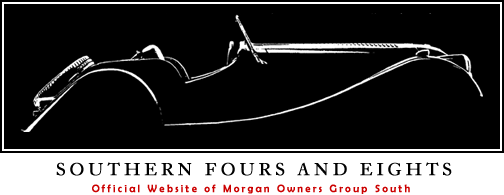Yes, You Want One – An ‘Anti-Drain-Back-Valve’ in Your Oil Filter
[This treatise was taken from a number of sites on the internet (and then edited some) and seems to be good guidance relative to the need for the anti-drain-back-valve in your Morgan’s oil filter. The question has come up a few times and we have tried to answer it, but haven’t really been convincing. This seems to do it. FYI, Race Cars with oil preheaters, etc., may have different requirements. Mark]
Your Engine ‘oil filter’ is a very important component; it traps dirt and debris, preventing them from circulating throughout the engine. This protects vital internal parts such as bearings, journals, and cylinder walls.
Another way the oil filter protects and helps lubricate the engine is using an anti-drain back-valve. This valve is predominantly used within the spin-on versions of today’s oil filter and not a part of the older style of cartridge style filters (such as the original style 1950s – 1960s Plus 4s filters). Although you may not have heard of it before or know what it does, this valve is extremely important. Extensive engine damage can result if it isn’t working properly.
Oil filter design
The oil filter’s design might seem simple, but there is a lot more to an oil filter than you might think. Before delving into the details of what damage can be caused by a faulty anti-drain back valve, it’s a good idea to know how a car oil filter works. Typical oil filter components include the following:
- Tapping or cover plate: This is the plate at the bottom of the filter. It serves as an entry and exit point for oil. It also contains a threaded center hole, which allows the filter to attach to the engine.
- Filter medium: Dirt and debris are trapped in the filter medium. Typically, it is constructed from microscopic cellulose fibers along with synthetic fiber. It is then saturated with resin for added strength. The filter medium is folded into pleats to create a greater surface area.
- Center steel tube: The center steel tube provides a structure for the filter. It also allows filtered oil to return to the engine.
- Relief valve: The relief valve opens when oil pressure is too great due to clogged filter media. This allows unfiltered oil to exit through the center tube to prevent engine starvation.
- End disc: Some oil filters use an end disc to prevent unfiltered oil from leaking into the center tube. Others use a sealant instead.
- Retainer: As the name implies, the retainer keeps the filter medium and end disc tight against the tapping plate.
- Anti-drain back valve: The anti-drain-back-valve prevents oil from draining out of the filter when the engine is turned off.
Engine damage caused by a faulty anti-drain-back-valve
During an oil change, it’s recommended you put fresh oil in the new filter before installing it. This is so oil is available to the engine as soon as it’s started.
The anti-drain-back-valve serves a purpose that’s like this oil change strategy. Every time your engine is shut off, the valve keeps oil from draining out of the filter. This allows the engine to receive oil immediately upon start up.
A faulty anti-drain-back-valve lets oil drain back into the engine. This keeps oil from getting to the engine when it’s first started. The result is engine wear and eventual failure from lack of lubrication. Low-quality oil filters often have a poorly designed anti-drain-back-valve that doesn’t work properly.
Don’t settle for low-quality oil filters
The best way to avoid anti-drain back problems is to use a high-quality filter. A good filter usually has a robust anti-drain-back-valve, designed to protect your Morgan’s engine.

Not quite sure that it’s all that great. Changing your oil and filter on a regular basis is most likely all that is needed. The Anti-Drain-Back-Valve can and do fail especially when oil changes are not done soon enough (especially true in a race car motor) releasing a fatal slug of particles that would otherwise be mostly suspended in the oil or accumulated on the bottom of the oil pan